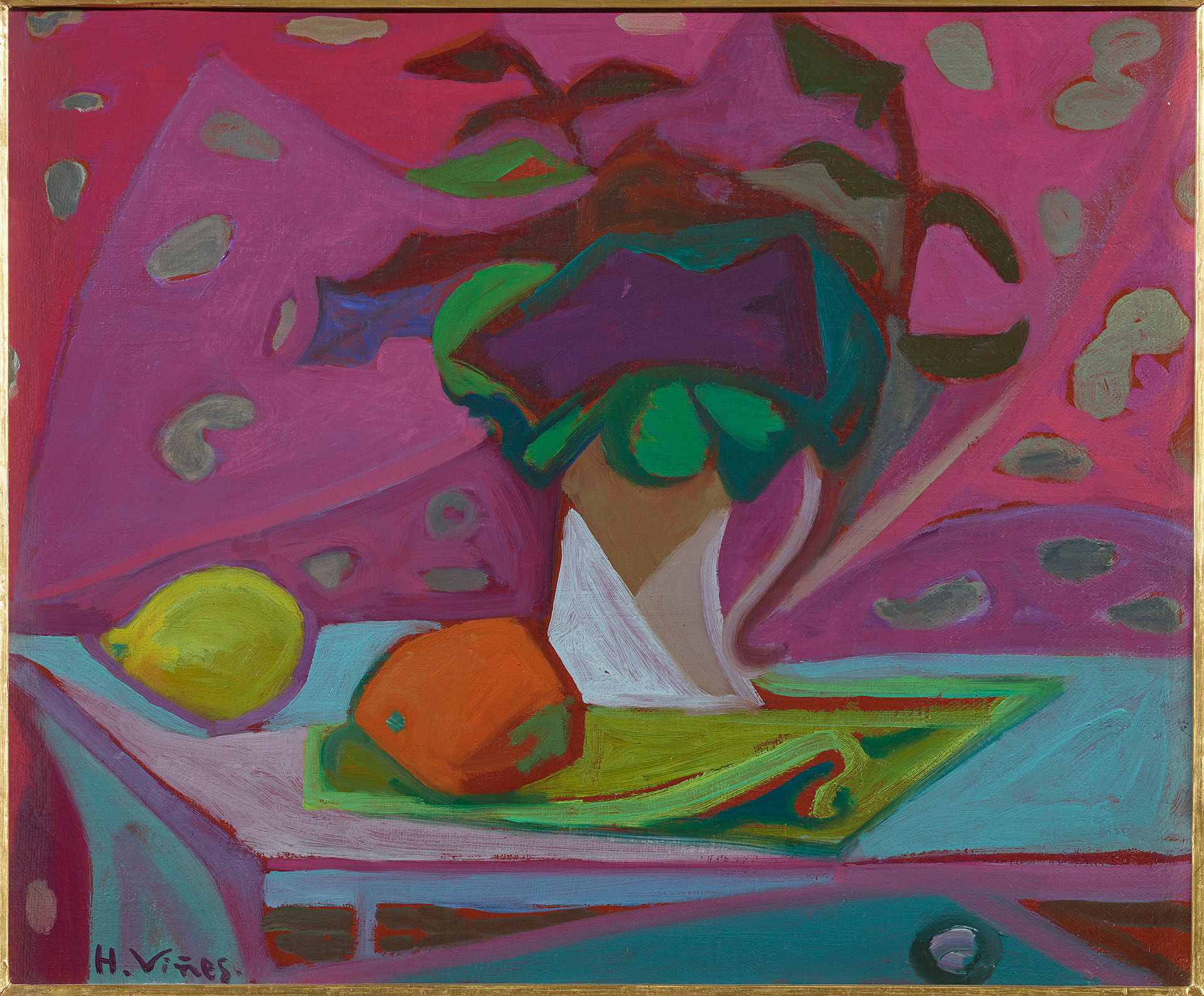
Hernando Viñes (París, 1904-1993)
Still Life
Circa 1943-1945
WORK INFORMATION
Oil on canvas, 38 x 46 cm
OTHER INFORMATION
Signed in the lower left-hand corner: "H. Viñes".
Hernando Viñes was the protagonist of one of the most famous photographs of Madrid's avant-garde art scene on the eve of the Civil War: a graphic record of the banquet given in his honour at Hostal Cervantes in May 1936, attended by Luis and Alfonso Buñuel, Lorca, Alberti, Neruda, Miguel Hernández, the sculptor Alberto, José Caballero and many others. The nephew of renowned pianist Ricardo Viñes, Hernando was the only member of the Second Spanish School of Paris, formed in the French capital. Following Picasso's advice, he studied first at Maurice Denis's Ateliers d'Art Sacré and later with André Lhote and Severini. In 1923, working in collaboration with his colleague and friend from Jaén, Manuel Ángeles Ortiz, he produced the sets and wardrobe designs for the production of Falla's El retablo de maese Pedro, directed by the composer himself at the palace of the Princess of Polignac. But most importantly, Viñes was, together with Bores and Cossío, one of the leading exponents of the lyrical figuration championed by Zervos and Tériade in the pages of Cahiers d'Art.
In the compilation of testimonies about Spanish artists of the Paris school published in 1960 by Mercedes Guillén, partner of Baltasar Lobo, the author quoted Viñes as saying that "[...] when I start to paint something, it's almost always a poetic theme, as well as an intimate predisposition. But one should not create literature with paint. The expressive media must be strictly pictorial. There is poetry in a baigneuse of Cézanne or in a Corot, but it is still painting; poetry only exists by and through painting."
In that poetic line of pure painting, which in a logical progression moved towards a personal path spun from the threads wrought in the collective adventure of lyrical figuration—in short, distilled from a synthesis of the structural legacy of the Cubist canon and the aspiration for what Bores called "a new Fauvism"—Viñes's art seemed to revisit the paradigm of Matisse and his ornamental ideal sometime in the second third of the 1940s. The canvas commented here is a product of that specific phase in Viñes's career.
Everything in this graceful Bodegón [Still Life], dated between 1943 and 1945, corresponds to that code. The aromatic drive of colour, the dappling that hints at the patterns in the background, the graceful curve of the magazine lying on the table, the concise contours of the fruit and the harmonic twist of the rising flower vase... every element of this poetic composition, though carried unencumbered—as always in his work—to a terrain of unique intimacy, seems to celebrate the purest joy of the Matissian canon. [Fernando Huici March]

